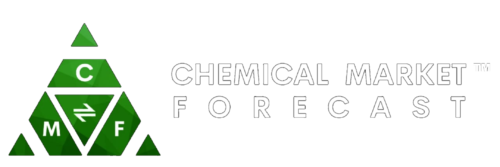Cenospheres Market Report
Cenospheres are lightweight, inert, hollow ceramic microspheres that are widely used as fillers in a variety of industries, including construction, oil and gas, automotive, and aerospace. Cenospheres are produced during the burning of coal, and they are collected from the ash residue by using separation techniques.
One of the key drivers of the cenospheres market is the growing demand for lightweight materials in various industries. Cenospheres are lightweight and have a low density, which makes them ideal for use as fillers in composites and polymers. They are used to enhance the strength, stiffness, and thermal properties of materials, while reducing weight and material costs.
The construction industry is one of the major consumers of cenospheres. Cenospheres are used as fillers in concrete, grout, and mortar to reduce the weight of structures and improve their insulation properties. They are also used in lightweight concrete blocks, panels, and roofing materials, as they offer excellent strength-to-weight ratio and thermal insulation.
The oil and gas industry is another significant consumer of cenospheres. Cenospheres are used as a proppant in hydraulic fracturing to keep the fractures open and allow the flow of oil and gas. They are also used in drilling muds to improve their rheological properties and reduce fluid loss.
While cenospheres offer many benefits, there are also some drawbacks that need to be considered. Cenospheres are a byproduct of coal combustion, which means that their availability is limited to the amount of coal that is burned. As the world shifts towards cleaner and more sustainable energy sources, the availability of cenospheres may decrease. Coal combustion and the production of coal ash can result in environmental pollution, including the release of greenhouse gases, heavy metals, and other toxic substances. While cenospheres are inert and do not release any harmful substances, their production is still linked to the coal industry, which raises environmental concerns. Cenospheres can vary in size and shape, which can affect their performance and consistency in different applications. This variability can make it challenging to achieve consistent results when using cenospheres as a filler.
The Asia-Pacific region is the largest market for cenospheres, accounting for over 40% of the global demand. The region is driven by the growing construction industry in countries such as China, India, and Japan. The increasing demand for lightweight materials in the automotive and aerospace industries is also contributing to the growth of the cenospheres market in the region.
North America and Europe are also significant markets for cenospheres, driven by the presence of major end-use industries such as construction, oil and gas, and automotive. The increasing demand for sustainable and eco-friendly materials in these regions is also driving the growth of the cenospheres market.
The cenospheres market is highly competitive, with a few major players dominating the market. Some of the key players in the market include Ceno Technologies, Envirospheres, Qingdao Eastchem Inc., Omya AG, and Petra India Group. These companies are focusing on expanding their product portfolios, enhancing their production capabilities, and entering into strategic partnerships to strengthen their market position.
TABLE OF CONTENT
Global Cenospheres Market Report
1 Market Introduction of Global Cenospheres Market Report
2 Market Segmentation of Cenospheres Market Report
2.1 Cenospheres Market Segmentation By Region
2.2 Cenospheres Market Segmentation By Type
2.3 Cenospheres Market Segmentation By Crop Type
3 Cost Structure of Cenospheres Market Report
4 Country Analysis of Cenospheres Market Report
4.1 China
4.1.1 Cenospheres Market Forecast & Size in China
4.1.2 Cenospheres Market Trends & Analysis in China
4.1.3 Key Cenospheres companies in China
4.1.4 Regulatory Framework of Cenospheres Market in China
4.2 Germany
4.2.1 Cenospheres Market Size in Germany
4.2.2 Cenospheres Market Trends & Analysis in Germany
4.2.3 Key Cenospheres companies in Germany
4.2.4 Regulatory Framework of Cenospheres Market in Germany
4.3 France
4.3.1 Cenospheres Market Size in France
4.3.2 Cenospheres Market Trends & Analysis in France
4.3.3 Key Cenospheres companies in France
4.3.4 Regulatory Framework of Cenospheres Market in France
4.4 Italy
4.4.1 Cenospheres Market Size in Italy
4.4.2 Cenospheres Market Trends & Analysis in Italy
4.4.3 Key Cenospheres companies in Italy
4.4.4 Regulatory Framework of Cenospheres Market in Italy
4.5 Netherland
4.5.1 Cenospheres Market Size in Netherland
4.5.2 Cenospheres Market Trends & Analysis in Netherland
4.5.3 Key Cenospheres companies in Netherland
4.5.4 Regulatory Framework of Cenospheres Market in Netherland
4.6 Russia
4.6.1 Cenospheres Market Size in Russia
4.6.2 Cenospheres Market Trends & Analysis in Russia
4.6.3 Key Cenospheres companies in Russia
4.6.4 Regulatory Framework of Cenospheres Market in Russia
4.7 Canada
4.7.1 Cenospheres Market Size in Canada
4.7.2 Cenospheres Market Trends & Analysis in Canada
4.7.3 Key Cenospheres companies in Canada
4.7.4 Regulatory Framework of Cenospheres Market in Canada
4.8 Mexico
4.8.1 Cenospheres Market Size in Mexico
4.8.2 Cenospheres Market Trends & Analysis in Mexico
4.8.3 Key Cenospheres companies in Mexico
4.8.4 Regulatory Framework of Cenospheres Market in Mexico
4.9 Singapore
4.9.1 Cenospheres Market Size in Singapore
4.9.2 Cenospheres Market Trends & Analysis in Singapore
4.9.3 Key Cenospheres companies in Singapore
4.9.4 Regulatory Framework of Cenospheres Market in Singapore
4.10 United Kingdom
4.10.1 Cenospheres Market Size in United Kingdom
4.10.2 Cenospheres Market Trends & Analysis in United Kingdom
4.10.3 Key Cenospheres companies in United Kingdom
4.10.4 Regulatory Framework of Cenospheres Market in United Kingdom
4.11 Switzerland
4.11.1 Market Size in Switzerland
4.11.2 Market Trends & Analysis in Switzerland
4.11.3 Key Cenospheres companies in Switzerland
4.11.4 Regulatory Framework of Cenospheres Market in Switzerland
4.12 Brazil
4.12.1 Market Size in Brazil
4.12.2 Market Trends & Analysis in Brazil
4.12.3 Key Cenospheres companies in Brazil
4.12.4 Regulatory Framework of Cenospheres Market in Brazil
4.13 USA
4.13.1 Market Size in US
4.13.2 Market Trends & Analysis in US
4.13.3 Key Cenospheres companies in US
4.13.4 Regulatory Framework of Cenospheres Market in US
4.14 Japan
4.14.1 Market Size in Japan
4.14.2 Market Trends & Analysis in Japan
4.14.3 Key Cenospheres companies in Japan
4.14.4 Regulatory Framework of Cenospheres Market in Japan
4.15 South Korea
4.15.1 Market Size in South Korea
4.15.2 Market Trends & Analysis in South Korea
4.15.3 Key Cenospheres companies in South Korea
4.15.4 Regulatory Framework of Cenospheres Market in South Korea
4.16 India
4.16.1 Market Size in India
4.16.2 Market Trends & Analysis in India
4.16.3 Key Cenospheres companies in India
4.16.4 Regulatory Framework of Cenospheres Market in India
4.17 Thailand
4.17.1 Market Size in Thailand
4.17.2 Market Trends & Analysis in Thailand
4.17.3 Key Cenospheres companies in Thailand
4.17.4 Regulatory Framework of Cenospheres Market in Thailand
4.18 Russia
4.18.1 Market Size in Russia
4.18.2 Market Trends & Analysis in Russia
4.18.3 Key Cenospheres companies in Russia
4.18.4 Regulatory Framework of Cenospheres Market in Russia
4.19 Malaysia
4.19.1 Market Size in Malaysia
4.19.2 Market Trends & Analysis in Malaysia
4.19.3 Key Cenospheres companies in Malaysia
4.19.4 Regulatory Framework of Cenospheres Market in Malaysia
4.20 Saudi Arabia
4.20.1 Market Size in Saudi Arabia
4.20.2 Market Trends & Analysis in Saudi Arabia
4.20.3 Key Cenospheres companies in Saudi Arabia
4.20.4 Regulatory Framework of Cenospheres Market in Saudi Arabia
5 Global Cenospheres Market Trends
5.1 Cenospheres Market Trends- Key Drivers
5.2 Cenospheres Market Trends- Key Restraints
5.3 Cenospheres Market Trends- Key Challenges
5.4 Porter’s Five Forces Analysis of Cenospheres Market
5.5 PEST Analysis- Cenospheres Market
6 Global Cenospheres Market Forecast
6.1 Global Cenospheres Market Forecast By Region
6.1.1 North America
6.1.2 Europe
6.1.3 APAC
6.1.4 Middle East
6.1.5 ROW
6.2 Global Cenospheres Market Forecast By Type
6.2.1 Fertilizer
6.2.2 Pesticide
6.3 Global Cenospheres Market Forecast By Crop Type
6.3.1 Fruits & Vegetables
6.3.2 Oilseed and Pulses
6.3.3 Cereals & Grains
6.3.4 Other
7 Supply Chain of the Cenospheres Market Analysis
8 Opportunity Analysis
9 Scenario Analysis
10 Key Company Profiles
11 Strategic Conclusions – Cenospheres Market Report
12 Abbreviations used in Cenospheres Market Report






Reviews
There are no reviews yet.